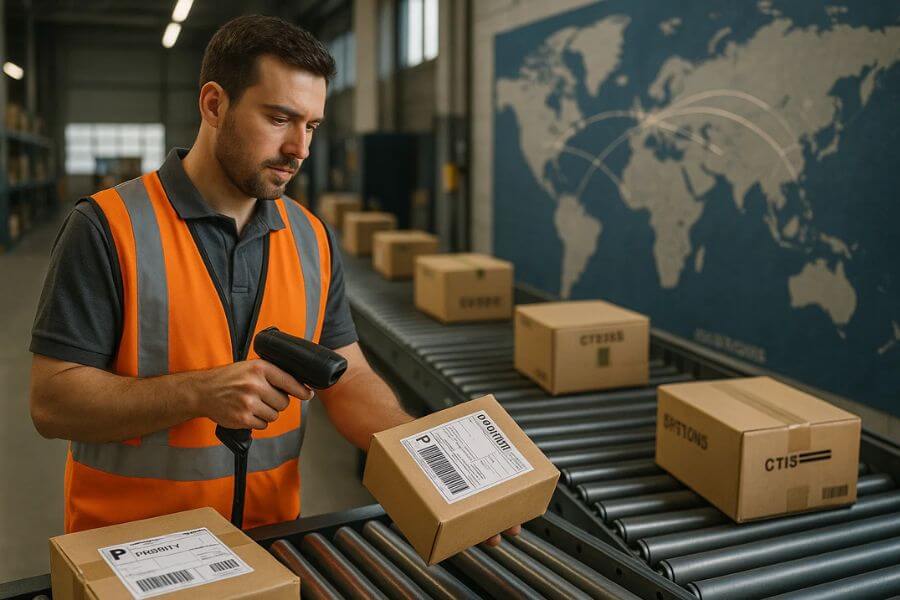De minimis rules play a crucial role in global trade, especially for ecommerce businesses selling internationally. These rules determine the minimum value of goods that can enter a country without incurring customs duties or taxes. In cross-border ecommerce, understanding de minimis thresholds can make the difference between a smooth customer experience and unexpected shipping delays or costs.
With ecommerce sales growing rapidly across borders, governments are revisiting their de minimis thresholds to balance trade facilitation and revenue collection. As a seller, importer, or logistics partner, knowing how these rules work and how they impact your operations is essential for competitive pricing, faster deliveries, and satisfied customers.
In this guide, we’ll explore 10 ways de minimis rules impact cross-border ecommerce shipping, from cost savings and delivery speed to customer satisfaction and global expansion strategies.
1. Reduced duties and taxes lower costs for sellers and buyers
One of the most direct impacts of de minimis rules is cost savings. When the value of a shipment is below the de minimis threshold in the destination country, it often enters duty-free and tax-free.
For example:
- In the United States, the de minimis threshold is $800, one of the highest in the world.
- In Australia, it’s AUD 1,000.
- In Canada, it’s CAD 40 for most goods from certain countries.
Why this matters for ecommerce shipping:
- Sellers can price products more competitively without factoring in duties.
- Buyers are more likely to complete purchases when there are no surprise fees at delivery.
- It reduces the total landed cost, making international purchases more attractive.
Pro tip: When targeting markets with higher de minimis values, consider creating “under-threshold” product bundles to maximize savings for customers.
2. Faster customs clearance improves delivery times
Customs processing can be a major bottleneck in cross-border ecommerce shipping. Goods that qualify for de minimis exemption often undergo simplified clearance procedures or automated screening, which speeds up delivery.
Impact on ecommerce operations:
- Fewer inspections mean reduced time at customs warehouses.
- Couriers can move shipments directly to last-mile delivery partners.
- Customers receive orders days earlier than if duties were payable.
This is particularly valuable in fast-fashion, electronics, and seasonal product categories where speed is a competitive advantage.
3. Lower cart abandonment rates
Unexpected import duties are one of the top reasons international shoppers abandon their carts. By leveraging de minimis rules, you can eliminate hidden costs at checkout, creating a more transparent buying experience.
Example:
A customer in the U.S. buying a $500 product from an overseas seller won’t face additional customs charges due to the high U.S. de minimis value. That confidence often translates into higher conversion rates.
Ecommerce tip: Display a “No Duties on Orders Under [Threshold]” message on your product pages to reassure international buyers.
4. Expansion into new markets becomes easier
High de minimis thresholds can lower the barrier to entry for testing new markets. Sellers can ship small batches directly to customers without needing to set up a local warehouse or complicated tax registration.
For instance:
- A Korean skincare brand can test the Canadian market by shipping small orders under CAD 40 directly to customers.
- An electronics accessory maker in China can target the U.S. market with shipments under $800.
Result: This allows businesses to gauge market demand before committing to large-scale investment.
5. Encourages small-value, high-frequency shipments
De minimis rules often lead to an increase in small parcel shipments rather than bulk imports. This is especially common in direct-to-consumer ecommerce models where orders are shipped individually from overseas warehouses.
Benefits:
- Reduced inventory risk for sellers.
- Ability to offer a wider product range without holding stock in every target market.
- Easier returns processing if orders remain below the threshold.
However, this approach can also increase per-unit shipping costs, so sellers must balance speed and efficiency.
6. Impacts fulfillment strategy and warehouse locations
The location of your fulfillment centers can make a big difference in how you leverage de minimis rules.
For example:
- Shipping directly from a country with favorable free trade agreements can allow goods to qualify for higher de minimis exemptions.
- Nearshoring to countries close to your target market (like Mexico for the U.S., or Eastern Europe for the EU) can help optimize costs and transit times.
Ecommerce takeaway:
Analyze your top markets’ de minimis thresholds and align warehouse placement accordingly to minimize duties and maximize speed.
7. Shapes pricing and product bundling decisions
De minimis thresholds directly influence how you price products and bundle them. If your order value slightly exceeds the threshold, it could trigger customs duties and taxes, making the purchase less appealing.
Example scenario:
- Threshold: $150
- Product A: $120
- Product B: $50
- Sold together: $170 (above threshold) → customer pays duties
- Sold separately: Both qualify for duty-free entry
Tip: Use dynamic pricing tools to suggest product combinations that remain under de minimis values.
8. Reduces customs brokerage and administrative costs
When shipments qualify for de minimis exemptions, they often bypass the need for a formal customs entry, meaning no customs brokerage fees, fewer documents, and lower administrative overhead.
Benefits for ecommerce brands:
- Reduced need for specialized customs staff.
- Lower costs per shipment.
- Easier scaling during peak seasons without customs bottlenecks.
For 3PL providers, this also means they can process higher volumes more efficiently.
9. Creates competitive advantage in customer experience
In markets with high de minimis thresholds, businesses can offer faster, cheaper, and duty-free deliveries, all of which boost customer satisfaction.
Customer perspective:
- Lower total cost of purchase.
- Faster shipping and fewer delays.
- No surprise bills from the courier.
Seller perspective:
- Stronger brand loyalty.
- Higher repeat purchase rates.
- Increased market share over competitors who ignore de minimis advantages.
10. Vulnerability to regulatory changes
While de minimis rules offer many advantages, they are subject to change based on government trade policy, economic needs, and political climate.
Recent trends show:
- Some countries lowering thresholds to protect domestic industries.
- Others raising thresholds to encourage ecommerce growth.
Ecommerce risk management tip:
Stay updated on global trade policies and maintain flexible fulfillment options to adapt quickly if de minimis thresholds change in your target markets.
Conclusion
De minimis rules may seem like a small technical detail in the complex world of cross-border ecommerce, but their impact on shipping costs, delivery speed, market expansion, and customer experience is enormous.
For ecommerce sellers, logistics providers, and brands eyeing global growth, the smart use of de minimis thresholds can mean the difference between slow, expensive deliveries and fast, cost-effective shipping that delights customers.
By understanding and strategically leveraging these rules, you can:
- Reduce costs for both you and your customers.
- Speed up delivery times.
- Minimize cart abandonment.
- Expand into new markets with minimal risk.
Bottom line: De minimis rules are not just a customs regulation; they’re a powerful ecommerce growth tool.





